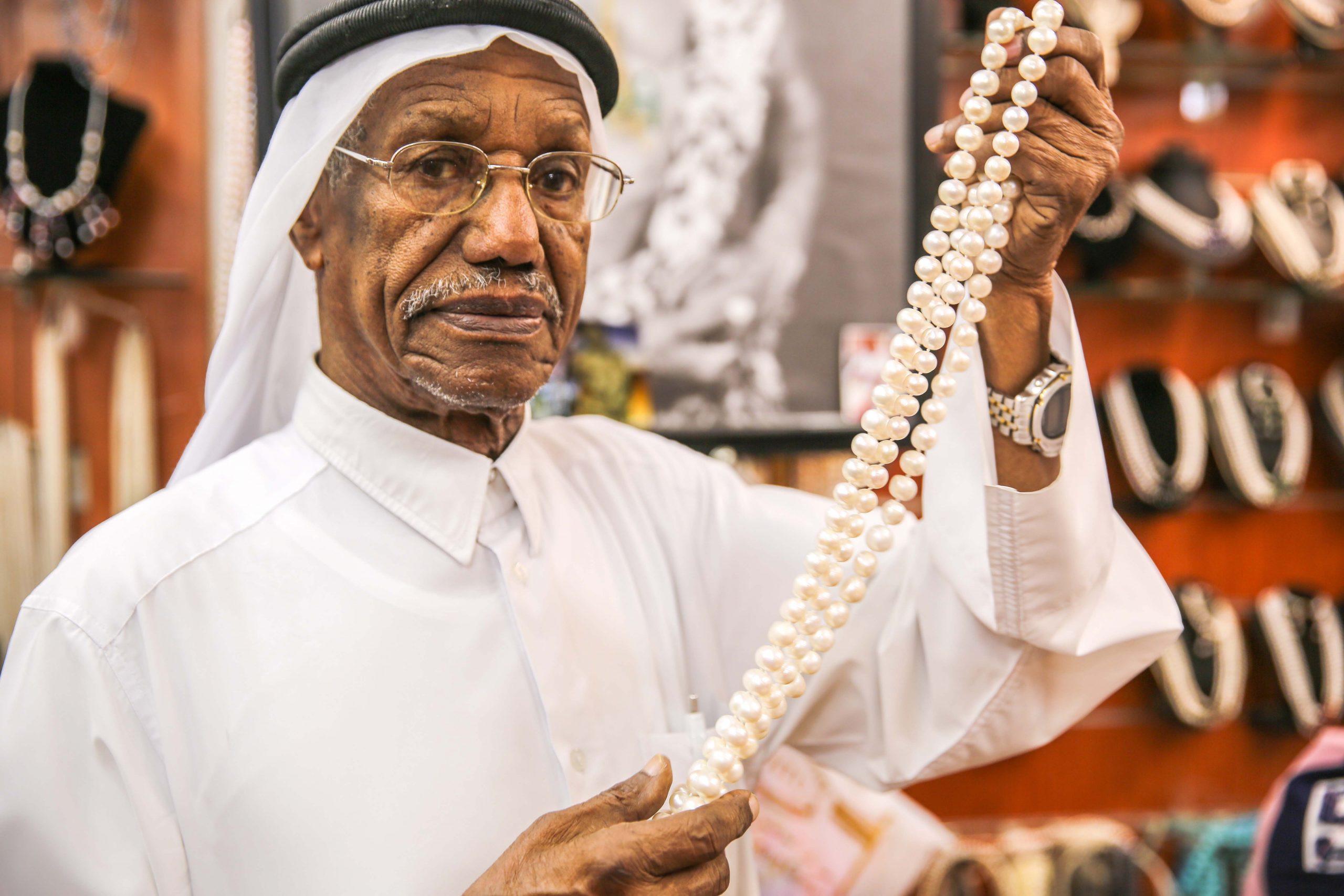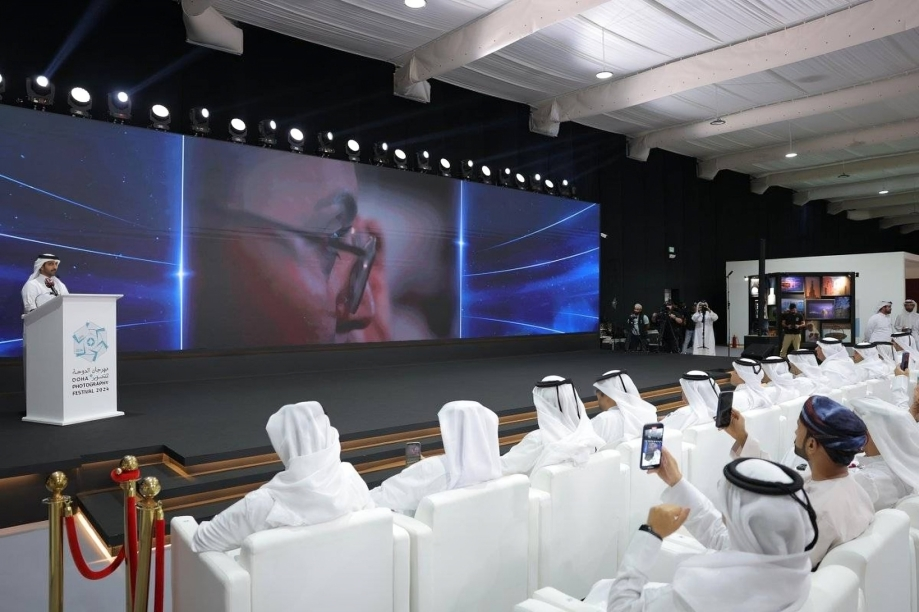
Surrounded by strings of pearls and precious stones, one of Qatar’s last living connections to the country’s oldest industry shows up each day to work behind a cluttered red-topped counter in the heart of Souq Waqif.
Saad Ismail Al Jassim, a 75-year-old Qatari, is regarded by some as the country’s oldest surviving pearl diver – a profession that provided a significant source of the peninsula’s wealth up until the mid-20th century.

“Times are different (now),” Al Jassim told Doha News during a recent interview. “No one dives anymore. Why would we do it? We have oil and gas now.”
But as the pace of modernization in Qatar quickens, some people are trying to revive the country’s ancient traditions in the form of educational tours, competitions and efforts to cultivate new pearl farms in the Gulf.
While many are quick to celebrate the country’s history, Al Jassim cautions that there was historically little glamour in pearl diving.
“We did it because we had to make money,” he said, adding:
“There was nothing else here. No oil, no cars, no roads or AC, not even water. Nothing. So we had to make our money somehow. It didn’t matter if it was hot or cold, we had to dive and sell our pearls. We had to hold our breath because there was no other (sources of) income.”
Relying on luck
Born into humble beginnings, Al Jassim started diving at the age of 15 and trained under some of the country’s top divers.
“We used to eat very little. Just dates and water in the morning, and a sweet rice cooked with date syrup and fish for dinner. If we ate too much, we wouldn’t have space for air when we dove,” he said.

A typical dive would last around two minutes, or however long the diver – equipped with only a nose clip, basket and weights to help stay underwater – could hold his breath.
Divers would often stay at sea for months at a time, scouring the seabed off Qatar’s coasts and relying heavily on luck.
“We never knew what we would find … We would just pick up as many oysters as we could and then come up to open them and check for pearls,” Al Jassim recalled.
However, he was entering the laborious industry just as it was going into decline. Al Jassim said he moved to Saudi Arabia at the age of 16 to work part-time at oil giant Aramco and complete his education.

Al Jassim took up bodybuilding in his spare time, placing second in the annual Mr. Dhahran competition held in 1958. Old portraits, showing a younger and more muscular Al Jassim draped in an animal print textile, are displayed in his shop.
He later returned to Qatar, where he worked in various government jobs in addition to serving as a Civil Defense officer for nearly three decades.
After his retirement, Al Jassim said he was presented with his shop in the Souq Waqif by his childhood friend, Father Emir Sheikh Hamad Bin Khalifa Al Thani.
“We grew up together. I used to go over to his house all the time and perform tricks. At the time, I was interested in magic, and I would do things like walk on hot stones and lie on a bed of nails. I’ve (since) given that up, but that’s how we used to be,” he said.
Seated behind the counter, Al Jassim fashions prayer beads out of thread and turquoise, tiger eye, amethyst, lapis and other semi-precious stones.

Most of his pearls are cultured and imported from China, Japan and Dubai, and retail for about QR15 for a pair of earrings and QR40 for a bracelet.
Perhaps ironically, Japan’s intensive cultivation of cultured pearls flooded international markets in the early 20th century and hastened the decline of Qatar’s pearling industry.
Reviving the tradition
In an effort to preserve Qatar’s connection to its past, several organizations are putting modern twists on the centuries-old practice.
That includes pearling contests for children and adults, as well as a reality TV competition:
Elsewhere, Qatar Foundation along with the Qatar Luxury Group and Tahitian pearl brand Robert Wan have collaborated in a pearl farming project, according to a recent article in The National.
The Qatar Pearl Legacy projects got underway some six years ago and consists of an offshore pearl farm with some 200,000 oysters, as well as various cultural and educational programs throughout the GCC.
The group has also begun cultivating cultured pearls and presented its first batch of harvested pearls at the Doha Jewellery and Watches Exhibition earlier this year.
According to the National, the project is also hoping to engage Qataris with the pearl farming process, and has flown students to Tahiti to learn more about pearls.
Al Jassim said he’s happy to hear that there’s more interest in his former vocation, which he worried was at risk of being forgotten.
“For years no one remembered pearls. It’s nice to see that they’re doing it now,” he said.
Thoughts?







